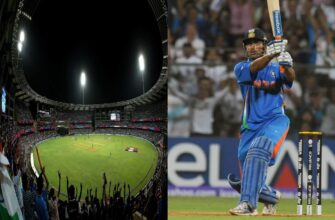At first glance, a football is disarmingly simple. A sphere. A tool for play. Yet, beneath its unassuming exterior, the official match ball for the 2026 FIFA World Cup – the Adidas Trionda – reveals a narrative of meticulous engineering, cutting-edge AI, and a journey through scientific rigour that would make even a rocket scientist nod in appreciation. It`s a testament to how even the most fundamental elements of the beautiful game are now powered by sophisticated, albeit largely invisible, technology.
The Name and the Nations: A Tri-Continental Tribute
The name Trionda itself is a clever fusion, embodying the spirit of the unprecedented three-nation co-hosting of the 2026 tournament: the United States, Canada, and Mexico. The `Tri` unmistakably signifies these three nations, vibrantly represented by the ball`s blue, red, and green accents. Meanwhile, `onda,` the Spanish word for `wave` or `vibe,` speaks to the dynamic flow of the game and the cultural pulse of the host region. The curved pattern adorning its surface isn`t merely aesthetic; it`s a visual metaphor for the ebb and flow of a match, hinting at the sophisticated aerodynamics beneath.
Conquering Climates: Designed for Diversity
The 2026 World Cup presents a unique geographical challenge, sprawling across 16 host cities from the diverse humidity of Mexico City to the cooler climes of Vancouver. For the Trionda, this wasn`t a mere logistical hurdle but a central design principle. Adidas engineers didn`t just consider one climate; they considered all of them. Extensive testing in controlled environments, followed by real-world trials across various host cities, ensured that the ball`s unique texture and enhanced grip perform identically, whether it`s soaring through thin mountain air or slicing through humid coastal breezes. It`s a subtle yet profound innovation, aiming to make altitude, temperature, and humidity as irrelevant to the ball`s performance as possible, allowing players to focus solely on the game.
The AI Whisperer: Data Beyond the Touch
Following in the footsteps of its predecessor, Al Rihla, the Trionda houses an AI-powered chip, though not without its own evolutionary refinements. This advanced sensor, now cleverly integrated into the ball`s side, is more than just a tracking device. It`s a source of real-time insights, designed to assist match officials in making faster and more accurate decisions, potentially refining the very pace and fairness of the game. Beyond officiating, the data harvested by this `invisible brain` will fuel future innovations, providing Adidas with an unprecedented understanding of how the game is played. Imagine knowing the exact touch frequency during a dribble – metrics previously impossible to capture. This isn`t just about a better ball; it`s about a deeper understanding of football itself.
Learning from the `Beach Ball` Blunders: The Obsession with Aerodynamics
The journey to the Trionda wasn`t without its historical detours. Football fans, and more notably goalkeepers, might recall the infamous 2010 Jabulani ball, derided as a “disaster” for its unpredictable flight. Or perhaps the Telstar 18, which also drew criticism for its erratic trajectory. These past controversies served as invaluable, albeit public, lessons. The Trionda`s design, featuring four fluid panels compared to Al Rihla`s 20 geometric ones, is a direct response to this history. This isn`t an arbitrary aesthetic choice; it’s a calculated move to optimize aerodynamics. Through rigorous wind-tunnel tests at institutions like Loughborough University and in-house robo-testing, Adidas meticulously fine-tuned every aspect – panel shape, seam length, debossing lines – to ensure unprecedented in-flight stability, launch speed, and precision. The goal? To make the ball perform exactly as the player intends, every single time.
The Ultimate Validation: From Lab to Foot
While scientific data is crucial, the ultimate test for any match ball lies with the players themselves. After countless hours in laboratories and wind tunnels, the Trionda faced its final, most subjective, and arguably most important examination: the feet of amateur and professional footballers. Their feedback is a critical validation loop, bridging the gap between scientific theory and real-world performance. It`s a recognition that despite all the technology, the ball ultimately exists for the human element of the game.
As the 2026 World Cup approaches, the Trionda stands ready – a silent, sophisticated participant. Its true success won`t be in how much it`s noticed, but how little. For when technology becomes truly seamless, it simply fades into the background, allowing the drama, skill, and passion of the beautiful game to shine unobstructed. The Trionda isn`t just a ball; it`s a testament to the pursuit of perfection, meticulously engineered to be the invisible heart of the next global football spectacle.







